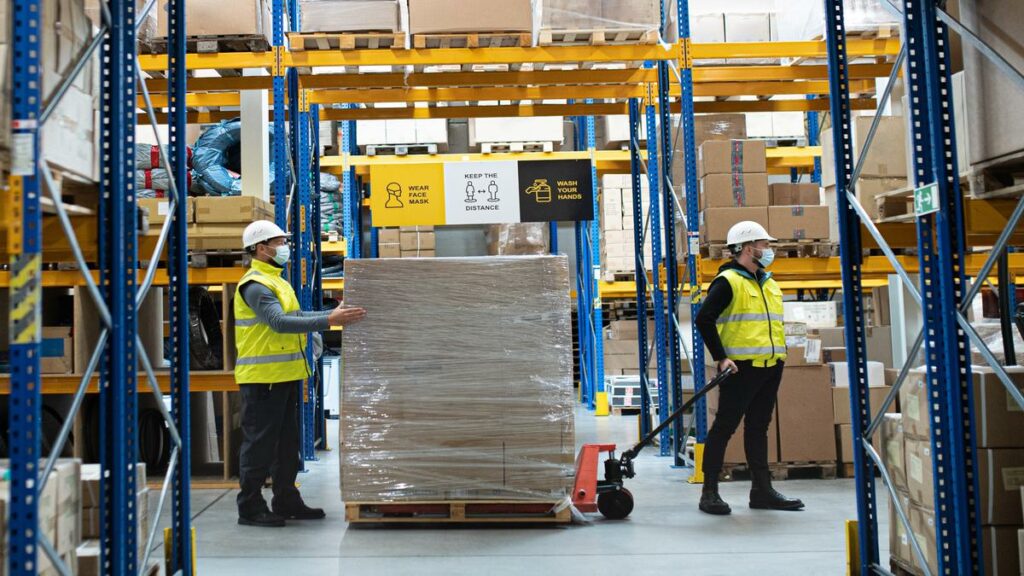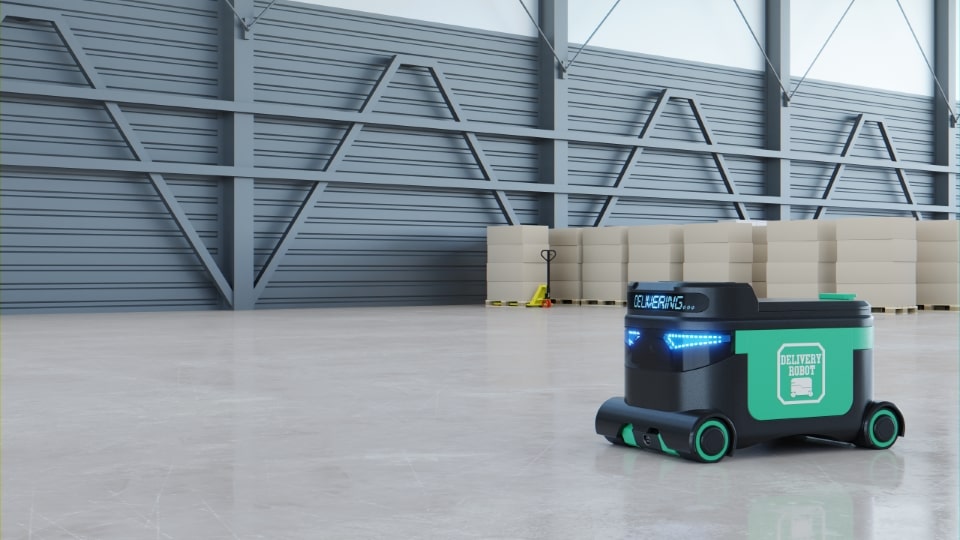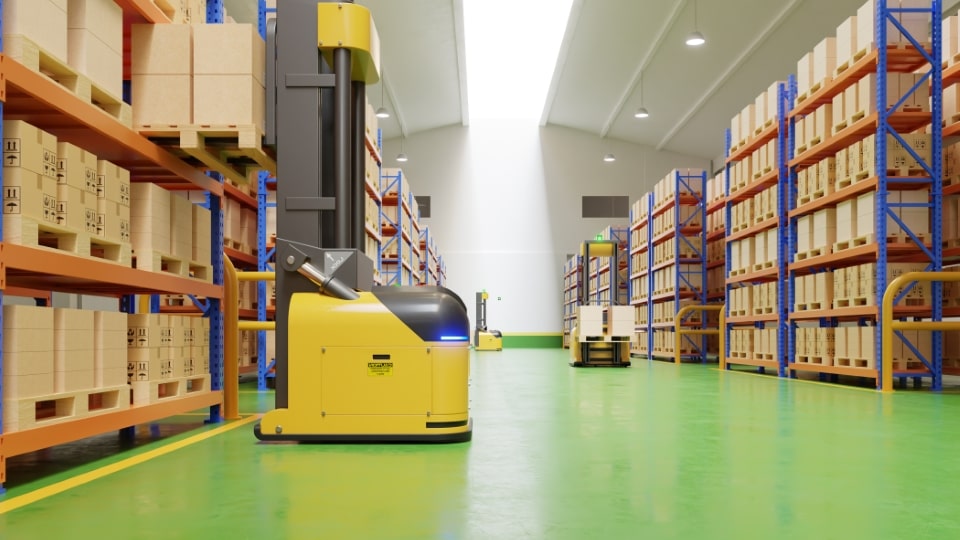Future of Robotics in Warehouse Management

The integration of robotics into warehouse management has revolutionized the logistics industry, making operations more agile and efficient. This guide explores the latest advancements in warehouse robotics, examining their impact on storage and distribution and how they are set to reshape the future of logistics.
The Rise of Robotics in Modern Warehouses

The integration of robotics into warehouse operations marks a significant evolution in the logistics sector. Modern warehouses are increasingly turning to robotics not just for efficiency, but to solve complex logistical challenges that traditional methods can’t address. The rise of e-commerce has dramatically increased the volume of goods being stored and shipped, creating a demand for faster, more accurate operations. Robotics technology meets this demand by enhancing speed, reducing errors, and enabling a seamless flow of operations.
- Automated Guided Vehicles (AGVs): These robots are fundamental in modern logistics, performing tasks such as transporting goods between different sections of the warehouse. Unlike traditional forklifts, AGVs are equipped with sensors and navigation technologies that allow them to move around without human intervention. They follow predefined routes marked by wires, magnetic strips, or visual cues, optimizing the internal transport of goods with precision.
- Robotic Picking Systems: Picking robots are transforming the picking process by using AI to identify, sort, and collect items faster than human workers. These systems are integrated with the warehouse’s inventory management system, allowing them to access real-time data on stock levels and locations. This integration enables them to plan the most efficient routes around the warehouse, reducing the time it takes to gather items for shipping.
- Sorting Robots: In large distribution centers, sorting robots streamline the process of organizing outgoing shipments and managing returns. They quickly identify and categorize items according to destination, priority, or type, enhancing the accuracy and speed of the sorting process. This capability is particularly valuable in managing the high throughput required by e-commerce platforms, where timely and accurate delivery is crucial.
- Drone Technology: Increasingly, drones are being used for inventory management within large warehouses. Equipped with scanning technology, drones can quickly and accurately perform stock checks by flying over the storage racks. This not only speeds up the inventory management process but also reduces the risks associated with employees working at height.
- Collaborative Robots (Cobots): These robots work alongside human staff to perform tasks that are either too intricate or too tedious for machines alone. Cobots are designed to safely interact with human operators, often using advanced sensors to avoid collisions. This collaboration can significantly enhance productivity by combining human flexibility and decision-making skills with robotic speed and accuracy.
Enhancing Efficiency with Advanced Robotics
Advanced robotics in warehouse management is a transformative force, crucial for tackling the growing demands of speed, accuracy, and cost-efficiency in logistics. As industries increasingly rely on just-in-time delivery and lean inventories, the role of robotics has become pivotal in maintaining competitive edges by enhancing operational efficiencies.
- AI-Driven Optimization: Modern robotics in warehouses are often powered by artificial intelligence (AI) that enables machines to make data-driven decisions. These robots can analyze historical data combined with real-time operational metrics to optimize task execution. For example, AI can forecast demand spikes based on trends and seasonality, allowing robots to prepare by reallocating resources dynamically, which minimizes bottlenecks and maximizes throughput.
- Machine Learning Algorithms: Many warehouse robots now incorporate machine learning algorithms that allow them to learn from every task they perform. Over time, these robots become more efficient at navigating the warehouse, picking and packing, and even identifying the most frequently accessed inventory locations. This ongoing learning process not only boosts efficiency but also continuously improves the accuracy of repetitive tasks, significantly reducing error rates.
- Autonomous Mobile Robots (AMRs): Unlike their AGV predecessors, AMRs operate without the need for physical guides like magnetic strips or wires. They use sensors and cameras to understand and navigate their environment, making them more flexible and adaptable to changes in the warehouse layout. AMRs can decide the best routes in real-time, avoiding obstacles and optimizing workflow paths, which enhances overall operational efficiency.
- Predictive Maintenance: Advanced robotics systems are equipped with diagnostic tools that predict maintenance needs before breakdowns occur. Sensors within the robots monitor performance and alert operators to potential issues, scheduling maintenance at optimal times to avoid disrupting warehouse operations. This predictive maintenance ensures that robots operate at peak efficiency and significantly reduces downtime.
- Energy Efficiency: New generations of robotic systems are designed to be energy efficient, reducing the overall energy consumption of warehouse operations. Technologies such as regenerative braking, where robots generate energy while slowing down or stopping, contribute to lower energy costs and support sustainable operational practices.
- Integration with Warehouse Management Systems (WMS): Advanced robotics are often fully integrated with WMS, allowing for seamless communication between different parts of the warehouse operation. This integration ensures that robots are instantly updated about inventory levels, order details, and shipping schedules, enabling them to adapt their tasks in real-time to meet actual operational needs.
- Enhanced Load Handling: Robotics technologies now include advanced gripping and lifting mechanisms that handle a wider variety of goods with greater precision. This capability not only increases the range of products that can be automatically processed but also ensures that delicate items are handled safely, reducing waste and damage.
Customization and Scalability of Robotic Solutions

The integration of robotics in warehouse environments significantly contributes to enhancing worker safety. This is achieved by automating potentially hazardous tasks and reducing the physical strain on employees, which in turn decreases the likelihood of workplace injuries and improves overall working conditions.
- Automation of Hazardous Tasks: Many warehouse operations involve risky tasks, such as lifting heavy items, operating machinery in high-traffic areas, or handling hazardous materials. Robotics can take over these dangerous tasks. Automated systems like robotic arms, AGVs, and drones can perform heavy lifting, transport goods through busy or narrow aisles, and even handle toxic or unstable materials without the risks associated with human involvement.
- Reduction of Human Error: Robotics help minimize accidents caused by human error. Equipped with sensors and safety protocols, robots can work with high precision and reliability. They can consistently adhere to safety regulations without lapses in concentration or judgment, factors often contributing to accidents in human-operated environments. This consistent reliability helps maintain a safe working environment, especially in high-risk areas.
- Ergonomic Support: Robotics also play a crucial role in reducing ergonomic injuries, which are common in warehouse settings due to repetitive motions and the manual handling of goods. Robotic systems can be designed to take over repetitive tasks such as packing, picking, and sorting, which are traditionally associated with musculoskeletal disorders among warehouse workers. By automating these processes, robots reduce the physical toll on human workers, thereby decreasing the incidence of strain-related injuries.
- Enhanced Safety Monitoring: Advanced robotics integrated with IoT sensors can continually monitor environmental conditions in the warehouse, such as temperature, humidity, and the presence of toxic gases. They can automatically adjust operations or alert human managers to potential safety hazards before they become a risk to worker health and safety. This proactive approach to safety management ensures that issues can be addressed quickly and effectively, maintaining a safe workspace.
- Collaborative Robotics (Cobots): Cobots are designed to work alongside human workers safely. Unlike traditional industrial robots that often require safety cages, cobots are equipped with advanced sensors and software that enable them to detect and react to human presence. They can slow down or pause their operations when a human worker gets too close, thereby preventing accidents. This capability allows cobots to assist human workers rather than replace them, combining human flexibility with robotic efficiency in a safe manner.
- Training and Skills Development: As robotics take on more roles within warehouse operations, they also change the nature of the jobs available. This transition leads to an increased demand for higher-skilled positions, such as robot operation and maintenance. Providing training for these roles not only contributes to a safer working environment by ensuring that all robotic operations are overseen by knowledgeable staff but also enhances career opportunities for workers.
Future Trends: Robotics and Internet of Things (IoT)
The convergence of robotics and the Internet of Things (IoT) is setting the stage for the next wave of technological innovation in warehouse management. This integration is not just enhancing existing capabilities but is also creating new opportunities for automation and efficiency in logistics. Here’s a deeper look into how this synergy is shaping the future of warehouse operations:
- Smart Warehouses: The concept of smart warehouses emerges from the integration of IoT devices with robotic systems, forming a network of connected devices that communicate continuously. In these smart warehouses, sensors collect data on everything from inventory levels to environmental conditions, and robots use this data to optimize tasks in real-time. For example, IoT sensors can track a product’s location within the warehouse, and robots can autonomously retrieve items based on real-time orders, significantly speeding up the processing time.
- Predictive Analytics and Maintenance: IoT enables the collection of vast amounts of data from robotic equipment, which can be used to predict failures before they occur. Predictive analytics can forecast when a robot might need maintenance, preventing breakdowns that could disrupt warehouse operations. This approach not only extends the life of robotic equipment but also ensures continuous operational efficiency.
- Enhanced Operational Visibility: IoT devices provide a detailed and dynamic view of warehouse operations, allowing managers to see exactly what is happening in real time. This visibility includes monitoring the performance of robotic systems, tracking inventory levels, and even observing environmental conditions that could affect product quality or worker safety. Enhanced visibility helps in making informed decisions quickly, adapting operations to changing conditions, and continually optimizing processes.
- Customized and Adaptive Robotics: With advancements in IoT, robotics can become more adaptive to changing warehouse needs. For instance, if sensors detect a sudden shift in inventory demand, the robotic systems can adjust their operations to prioritize tasks that align with real-time business goals. Additionally, IoT enables the customization of robotic operations to the specific requirements of the goods being handled, whether it’s delicate electronics requiring gentle handling or heavy goods that need robust support.
- Energy Management: Integrating IoT with robotics also opens avenues for better energy management. Smart sensors can optimize the energy usage of robots by monitoring their operation and adjusting the power based on the task’s complexity and requirement. This not only helps in reducing operational costs but also supports sustainability initiatives by minimizing the energy footprint of warehouse operations.
- Robotics as a Service (RaaS): IoT facilitates the expansion of Robotics as a Service (RaaS) models by enabling remote monitoring and management of robotic systems. Businesses can now rent robotic services without needing to invest in the infrastructure to support them, as IoT systems can provide continual performance data to service providers, ensuring that robots are always functioning optimally.
- Security Enhancements: As warehouses become more digitized with IoT and robotics, security becomes paramount. Advanced IoT systems offer sophisticated security protocols to protect against cyber threats, ensuring data integrity and system security. Encryption, regular security updates, and advanced threat detection systems are integral to safeguarding the automated processes.
Conclusion
As robotics technology continues to evolve, its integration into warehouse management is set to deepen, offering even greater efficiencies, safety, and scalability. Businesses looking to maintain a competitive edge should consider investing in these technologies to harness the full potential of modern logistics innovations.
Whether you need general freight moving, auto transportation, specialized services for oversized vehicles, construction truck transport, car storage, landoll services, or towing, we’re here to help. Call us now for a free consultation!
FAQ Section: Addressing Your Top Concerns
Are Robotic Systems in Warehouses Cost-Effective for Small Businesses?
Yes, with Robotics as a Service (RaaS), small businesses can access advanced robotics technology without hefty upfront investments, making it a scalable solution.
What Safety Benefits Do Robotics Provide in Warehouse Environments?
Robotics minimize human exposure to hazardous tasks and ergonomic risks, enhancing overall workplace safety and reducing injury-related downtime.
How Do IoT and Robotics Work Together in a Smart Warehouse?
IoT devices collect and transmit data to robotic systems, optimizing tasks such as inventory management and real-time tracking, enhancing overall operational efficiency.
Can Robotic Systems Be Customized to Fit Specific Warehouse Needs?
Absolutely, modern robotic solutions are highly customizable, allowing businesses to tailor robotic functions to specific operational requirements and scale as needed.
What Future Trends Should I Watch for in Warehouse Robotics?
Expect advancements in AI integration, increased adoption of Robotics as a Service (RaaS), and greater emphasis on energy-efficient and collaborative robotic solutions.
How Do Robotics Enhance the Security of Warehouse Operations?
Advanced robotics combined with IoT offer enhanced surveillance, real-time monitoring, and automated responses to potential security threats, ensuring robust operational security.
Follow us on Instagram for more insights and updates on everything freight @lasvegasexpedited.
